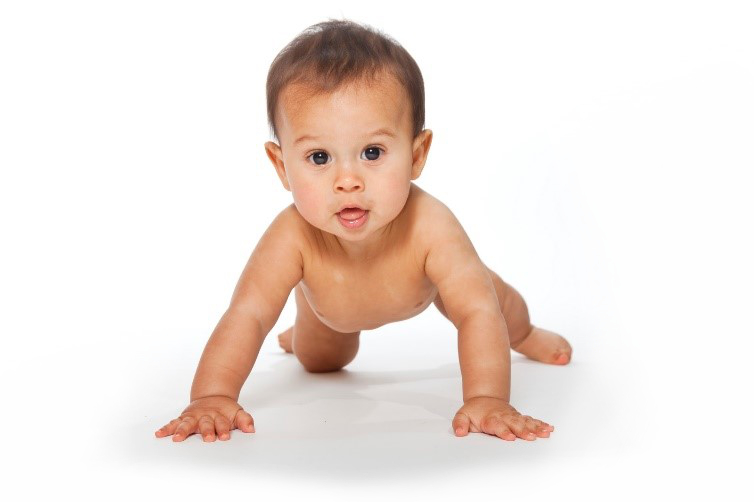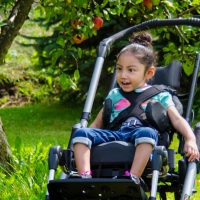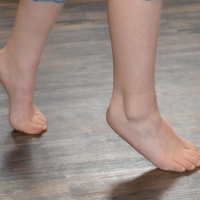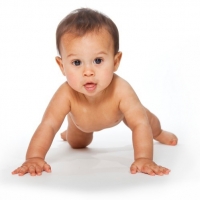When we think of physical fitness, we often think about adults and youth getting in shape; but what about the physical development of a baby? Parents are given advice about their baby’s development anywhere from books, to their next door neighbor. Often the advice is vague or conflicting. Our lives are becoming more and more complicated and families need some straightforward, balanced and yet simple guidelines to facilitate the development of their baby.
Since 1992, the “Back to Sleep” program has been a huge success in reducing the incidence of SIDS (sudden infant death syndrome). Parents need to continue having their infants sleep on their backs. However, we need to have an equal emphasis on “tummy to play”.Babies need to have the opportunity to experience a verity of positions throughout the day, handled directly by their parents or caretaker, and should be taking their naps in a crib or bassinette. Babies need to spend time on their stomachs during periods when they are awake and alert. When a baby plays on their stomach, they strengthen their neck, spine, stomach, shoulder, hand and hip muscles. The stronger these muscles are the faster the baby will learn to roll crawl, sit up, and eventually walk.
Many babies who have had little experience as young infants with “tummy time” learn to dislike being placed on their stomachs and usually have delays in their large and fine motor skills. Babies learn about their world with all of their senses. Babies receive a whole host of information through all of their senses by playing on their stomachs. The sense of touch is the sense that is most stimulated while on their stomachs. The best form of exercise equipment that a baby has access to is gravity, a clean safe floor, and a loving caretaker. Toy companies have made many fun play mats for infants that motivate the child to stay on their stomach to play.
Parents have many choices in other forms of infant equipment that are convenient, fun, and easy to use; but not necessarily beneficial for the baby’s physical development if used in excess. Most parents have an infant seat that can easily pop into a car seat or stroller base, and it often doubles as a place to feed the baby with a bottle or a convenient place to nap. Many babies are spending most of their time laying on their backs in a reclined position with little ability to move and use their muscles. This also puts them at risk for developing tight neck muscles (Torticollis) and flat areas on their heads. Babies need to have the opportunity to experience a verity of positions throughout the day, handled directly by their parents or caretaker, and should be taking their naps in a crib or bassinette.
The busy family, who needs to go to many appointments, and be out in the community for long periods of time during the day certainly needs to make exceptions to this rule, and yet be creative in achieving the above stated principle. You may need to carry your baby when outside the car instead of having him/her in an infant seat.
The Exersaucer has probably been the most popular piece of play equipment for babies in the last seven years. The Exersaucer is generally safe, it provides movement stimulation, it offers a surface for babies to stand in, and provides a place for toys on the tray.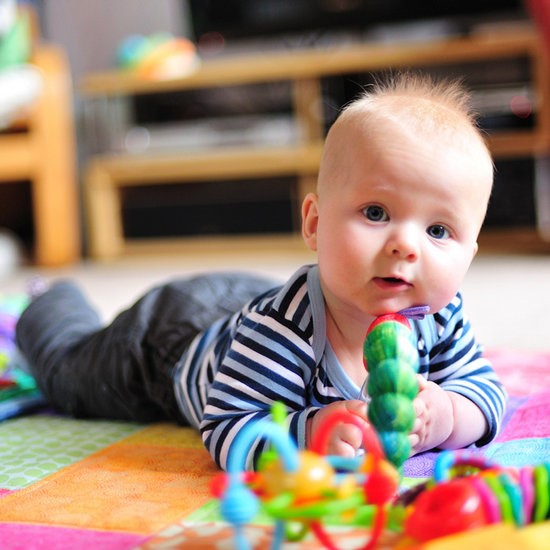 However, a baby has the option of just “hanging out” in it and not using many muscles for movement. They will not develop core muscle strength, which is the basis for all movement and development of motor skills. If the Exersaucer is not adjusted to the appropriate height of the infant, the baby can spend most of its time up on his or her tiptoes; developing bad habits of movement. Sometimes we believe that they are so fun, safe, and good for our baby’s development that we lose track of how long the baby is in the exersaucer. There is no evidence that Exersaucers foster development of sitting, crawling, or walking.
However, a baby has the option of just “hanging out” in it and not using many muscles for movement. They will not develop core muscle strength, which is the basis for all movement and development of motor skills. If the Exersaucer is not adjusted to the appropriate height of the infant, the baby can spend most of its time up on his or her tiptoes; developing bad habits of movement. Sometimes we believe that they are so fun, safe, and good for our baby’s development that we lose track of how long the baby is in the exersaucer. There is no evidence that Exersaucers foster development of sitting, crawling, or walking.
The infant swing is wonderful for calming an irritable baby, and providing them with movement stimulation. A baby who falls asleep in the swing should be removed from it as soon as possible.
“Jonny Jump Up’s” are also a thrill for most babies and their parents as they watch their child’s beaming, giggling face while he or she bounces up and down. Babies who are capable of getting the jumper going so well that they leave their feet and then come crashing down on them, are at risk of injuring their muscles, bones and joints. A baby’s hip joint is not adequately developed enough to take the impact of jumping.
A safe infant carrier, where the baby can be carried close to the caretaker’s body is a great way for the baby to be held when the caretaker needs their hands free to do other things. We have an outstanding community that offers families a variety of activities for the physical development of your children. Parent/infant swimming programs are of the best activities you can do with your child. Our local hospitals offer infant massage classes to parents and their babies which stimulate parent-child bonding, sensory development, emotional development and can benefit in the infant’s digestion. Parents have the most difficult yet rewarding job in the entire world. There are many choices and decisions to make regarding all aspects of raising healthy children.,
The following are some solid, simple straight forward guidelines toward developing a physically fit baby:
- Your baby should have a minimum of ten minutes per age in months of tummy time for play on the floor. So, if a bay is 2 months old they should be spending a minimum of twenty minutes per day on their stomachs for play. If they are 3 months old, then a minimum of 30 minutes of tummy time per day. It can be broken down into 5 minute sessions throughout the day. Some babies tolerate it better if they lay on top of their parent while the parent is on their back on the floor in a recliner.
- Your baby should not spend more than 20 minutes per day in an exersaucer, infant swing, or infant seat (except for long car rides or stroller rides).
- Consider taking your baby out of his/her infant seat and carrying him/her when you run errands.
- Consider discontinuing the use of jumping type pieces of equipment for your baby.
- Play directly with your baby as much as possible without the use of equipment to hold them.
- Consider enrolling in an infant/parent play group, swimming class or massage class.
Most of all enjoy your baby as you watch in awe of his/her rapidly unfolding physical development!

